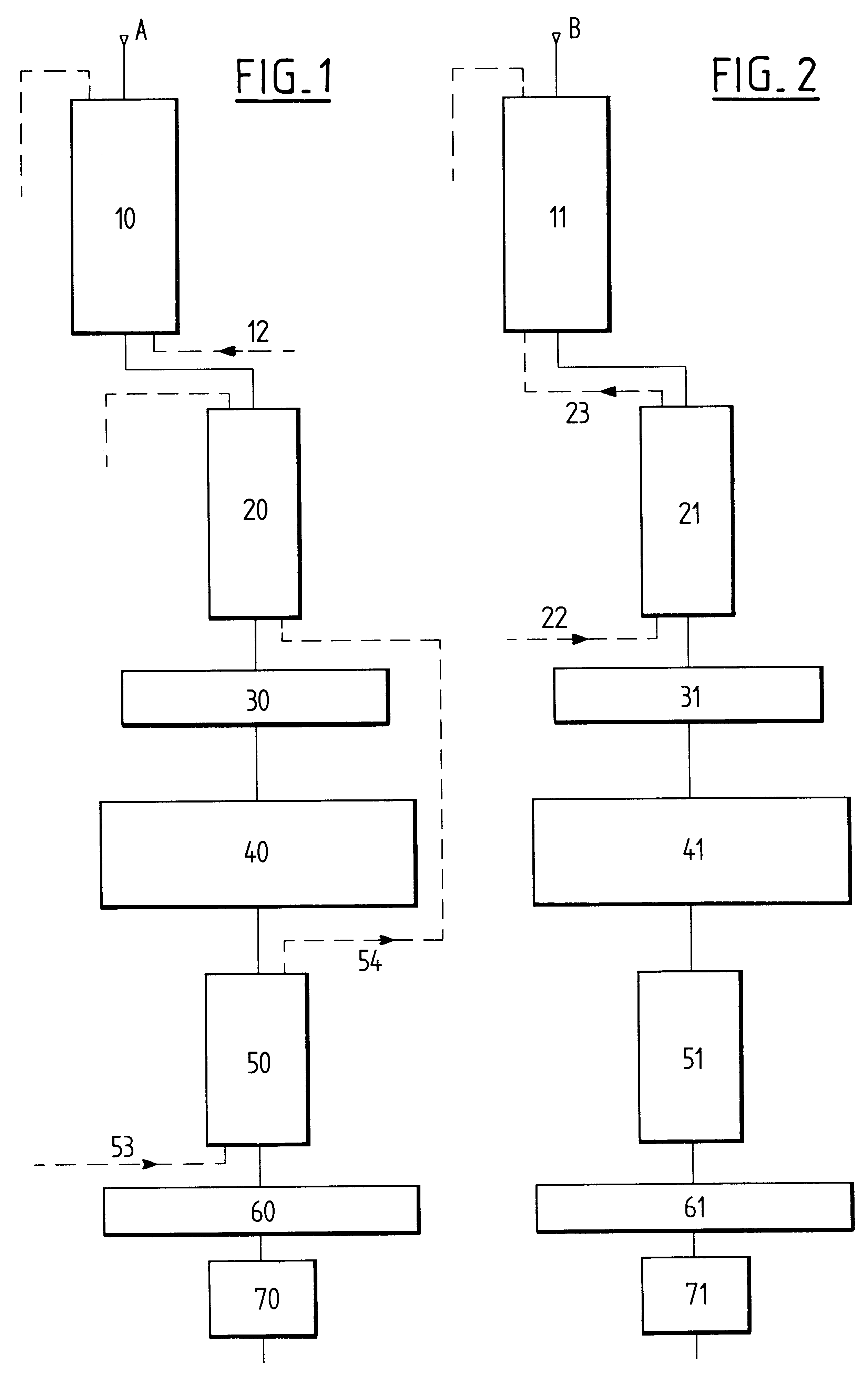By means of the present invention, an optimum organization of various
demineralization techniques is proposed in order to obtain highly demineralized whey at better cost and with minimum loss of the useable material while nevertheless maintaining the intrinsic quality thereof, in particular at microbiological level, by preserving it for example from
lactose being degraded into
lactic acid, proteins being degraded into non-
protein nitrogen (NPN), . . . By means of this organization, the performance of separation apparatuses using membranes such as
electrodialysis apparatuses or
nanofiltration units is improved very substantially, thereby making it possible to reduce the surface areas of the membranes required, and thus making it possible to reduce running costs, with the additional consequence of obtaining low manufacturing costs for the whey
demineralization treatment, regardless of whether it is treated in the raw or unconcentrated state or in the concentrated state.
This exchange of divalent cations for protons and of anions for
chloride ions presents multiple advantages concerning both subsequent treatment implementing separation membranes and also the quality of the product itself. For example, exchanging cations for protons diminishes the influence of unstable proteins that are often associated with divalent cations and that tend to precipitate onto the surfaces of membranes, thereby requiring production to be stopped frequently for cleaning purposes. For example, since the step of exchanging divalent ions with
chloride ions relates essentially to sulfates, the substance is relieved of the drawbacks of such sulfates which are firstly poorly ionized and therefore difficult to transfer through the membranes of electrodialysis apparatus, and which secondly pollute such membranes to a great extent. For example, the substance coming from those two
ion exchange steps is a substance whose pH is relatively low, and the acid pH of this whey is a factor which enables citrate ions and
phosphate ions to be transferred through nanofiltration membranes. Such transfer is practically non-existent in the presence of whey that has not been acidified. This performance is of considerable importance since, of all salts, it is known that
phosphate ions are the most difficult to eliminate.
It should also be observed that having a substance with highly acidic pH at the outlet from these
ion exchange steps is advantageous concerning control over microbiological quality. This substance lends itself in most advantageous manner to
pasteurization at around 90.degree. C. to 100.degree. C. for a period of one or more minutes, which
pasteurization serves to eliminate those germs that are the most difficult to destroy, i.e. sporulated germs, but without spoiling the proteins.
The extraction of divalent cations is improved by subsequently causing the substance that comes from said first carboxylic resin column to percolate over a strong cationic resin. Once 60% to 65% of the
calcium and
magnesium divalent cations have already been exchanged for protons by
percolation over the carboxylic resin, the remainder of these divalent cations are exchanged for protons by the strong cationic resin. The strong cationic resin also makes it possible to find pH equilibrium that is preferably less than 3 by exchanging protons for
monovalent ions of
potassium and
sodium.
If the whey that has percolated over the resins is a concentrated whey, then, in accordance with the invention, the substance after these
ion exchange steps is applied to the inlet of electrodialysis apparatus. By acting on a concentrated substance, the quantity of
electric charge per
unit volume is much higher than that present in non-concentrated whey, which acts in favor of using electrodialysis apparatus whose operation is then optimized from the point of view of electrical
conductivity. Since the substance is also practically free from divalent ions, its operation is also optimized concerning the transfer of ions through cationic and anionic membranes. It has been observed firstly that the electrodialysis apparatus used in this way requires far less maintenance and upkeep, and secondly that the lifetime of the membranes is very significantly increased by factors of practically 1 to 2.
For non-concentrated "soft" whey, i.e. whey in which the concentration of
dry matter is about one-third that of a concentrated "soft" whey, demineralization is preferably continued by using a nanofiltration unit. Since the
ion exchange steps have eliminated most of the drawbacks existing in conventional nanofiltration of whey, this treatment stage possesses a first
advantage of further demineralizing the whey since transferring chloride anions presents no difficulty, and since the acidity of the medium is high, the transfer of citrate and phosphate ions that have not been exchanged in the preceding steps is greatly improved. It possesses a second
advantage which is that of extracting a very large quantity of water from the substance thus leading to a demineralized whey having a
high concentration of valuable substances such as
lactose and serum proteins. In this case also, it has been found that the performance of the nanofiltration operation is simply not comparable with that normally encountered when applying this treatment to raw whey.
 Login to View More
Login to View More  Login to View More
Login to View More 

